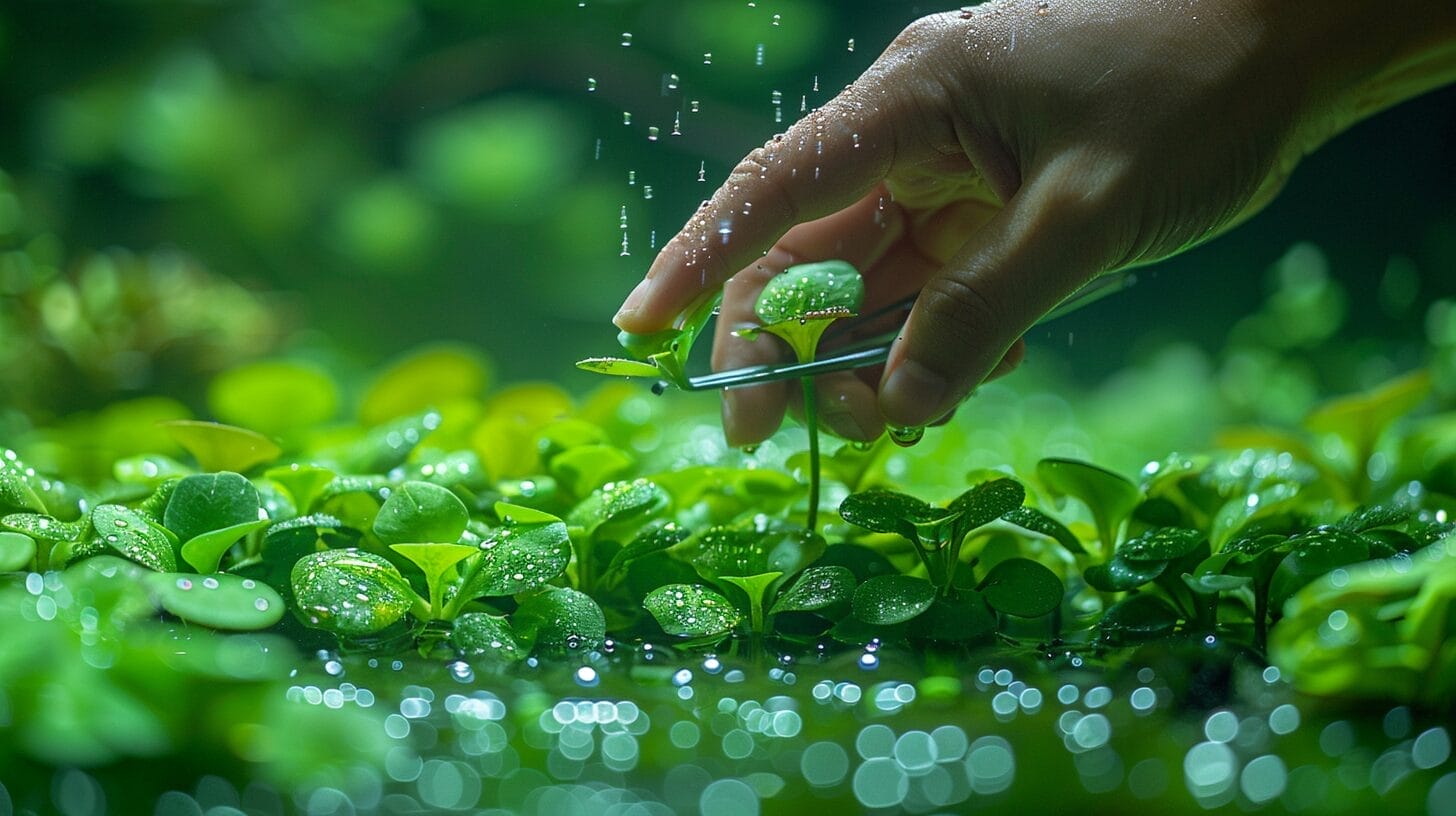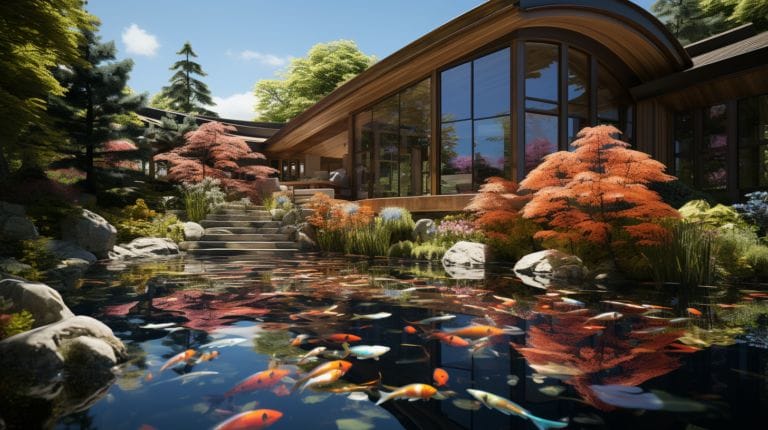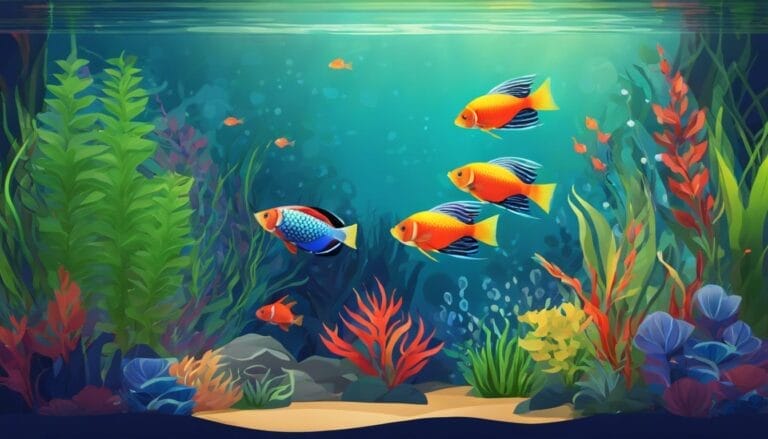How to Plant Aquatic Plants: Aquarium Planting 101
Wondering how to plant aquatic plants in your aquarium? Seeking a comprehensive guide for aquarium planting? Explore our Aquarium Planting 101, offering step-by-step instructions and tips for successful aquatic plant cultivation in your tank.
Key Takeaways
- Select appropriate stem, floating, and grass-like plants for variety.
- Ensure nutrient-rich substrate and use liquid fertilizers for growth.
- Plant rhizome and sword plants with care above substrate.
- Securely plant stem plants and space them apart for growth.
- Plant floating plants easily and carpeting plants with substrate for lush displays.
Understanding the Basics of Planting Aquarium Plants
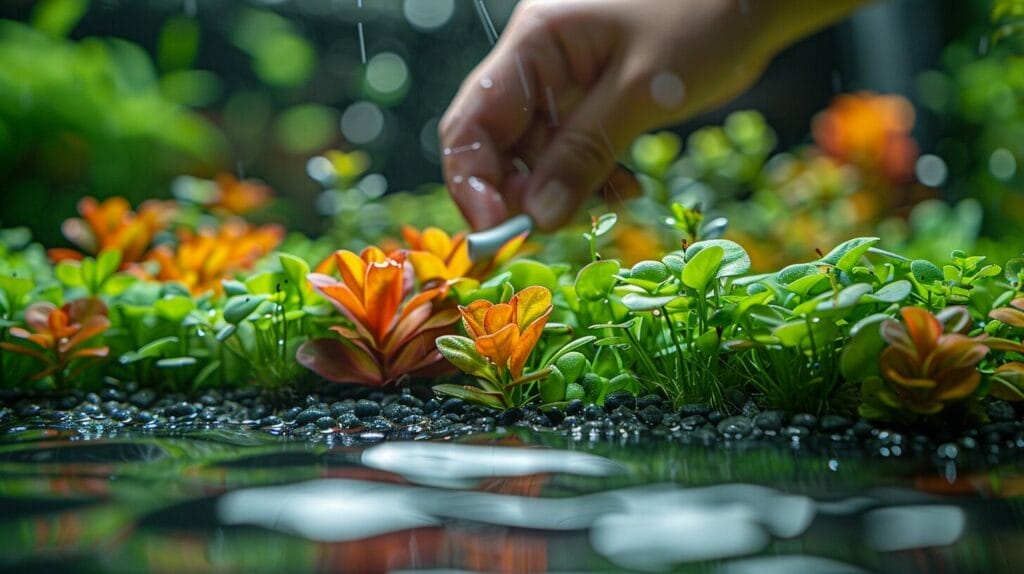
Let’s explore the fundamentals of planting aquarium plants. When it comes to setting up your underwater paradise, selecting the right plants is essential. Different varieties like stem plants, floating plants, and aquatic grass-like plants each bring a unique element to your underwater world.
Before diving in, make sure your substrate is nutrient-rich to support plant growth. Consider using liquid fertilizers to provide vital nutrients for your aquatic flora.
Stem plants are a popular choice due to their versatility and ability to grow tall, creating a lush background in your aquarium. Floating plants, on the other hand, add a whimsical touch as they drift freely on the water’s surface. These plants not only enhance the aesthetics of your tank but also provide shade and shelter for your aquatic friends.
Step-by-Step Guide to Planting Rhizome Plants and Sword Plants in Your Aquarium
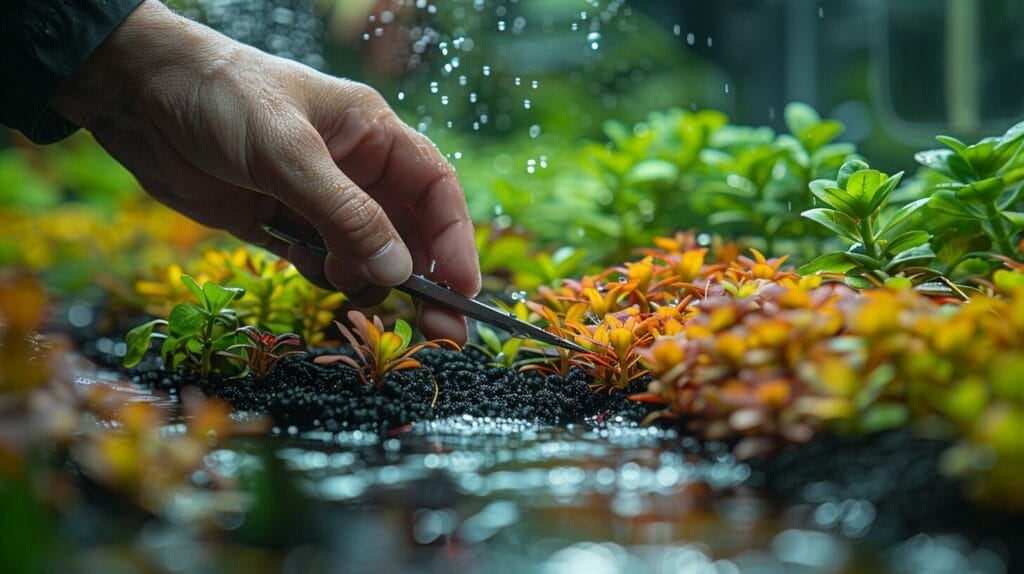
To plant rhizome plants and sword plants successfully, start by choosing a nutrient-rich substrate. Position the plants with the rhizome or base slightly above the substrate to avoid rotting. Rhizome plants like Anubias and Java Fern shouldn’t be buried in the substrate as it could lead to decay.
When planting sword plants, keep the crown above the substrate to prevent rot. Swords require regular fertilization to thrive, so consider adding root tabs to provide essential nutrients. Ensure the plants have enough space to prevent overcrowding and algae issues.
Mastering the Art of Planting Stem Plants and Grass-Like Plants in Your Aquarium
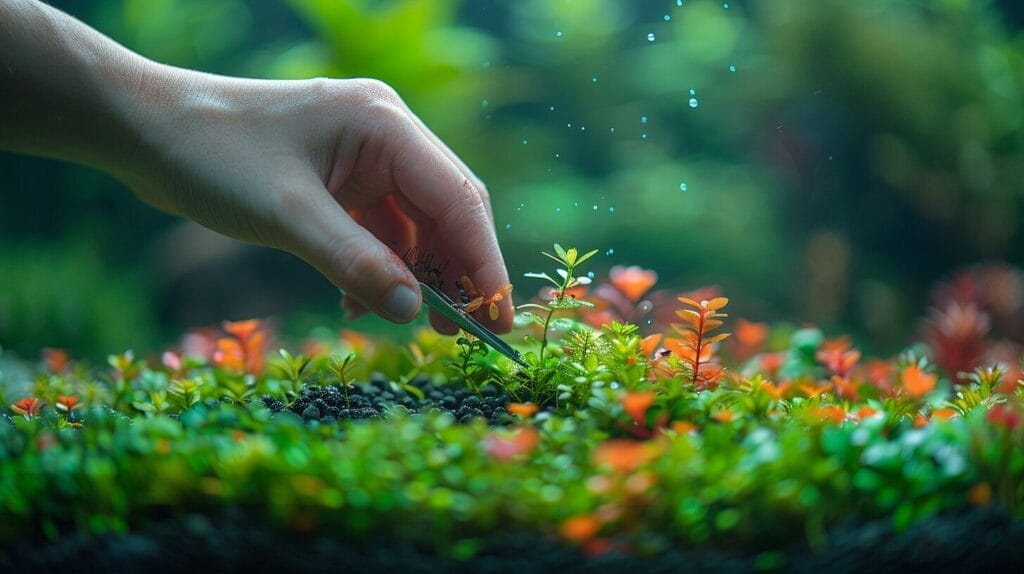
Stem plants, such as Rotala and Ludwigia, need meticulous planting to secure their roots in the substrate. When planting grass-like plants like Dwarf Hairgrass or Monte Carlo, separate and plant individual strands to promote spreading.
Trim any damaged leaves off stem plants, and plant each stem a few inches apart. Grass-like plants should be planted close together to create a lush carpet effect. Regular pruning and fertilization are key to maintaining stem plants and grass-like plants.
Techniques for Planting Floating Plants and Carpeting Plants in Your Aquarium

Floating plants like Water Lettuce and Duckweed provide shade and oxygenation, requiring minimal planting techniques. Carpeting plants such as Dwarf Baby Tears and Monte Carlo create a lush carpet effect at the bottom of your tank, requiring substrate planting and proper lighting for best growth.
Here is a simple guide to planting floating and carpeting plants in your aquarium:
| Floating Plants | Carpeting Plants |
|---|---|
| – Water Lettuce | – Dwarf Baby Tears |
| – Duckweed | – Monte Carlo |
| – Provide shade and oxygen | – Create a lush carpet effect |
| – Minimal planting techniques | – Substrate planting required |
Maintaining a suitable aquarium environment, with adequate lighting, nutrients, and water conditions, is vital. Regular pruning and monitoring will also help in keeping them flourishing.
The Intricacies of Planting Cryptocoryne Plants in Your Aquarium
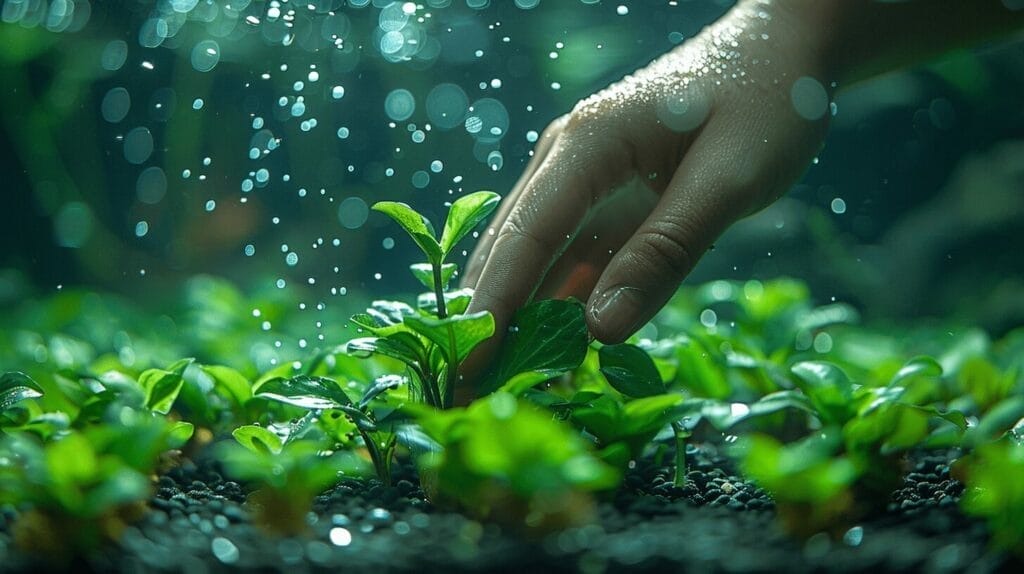
Cryptocoryne plants, known for their vibrant colors and unique leaf shapes, require special attention. These plants prefer to be partially buried in the substrate, with their roots covered and the crown above the surface.
Proper care and maintenance are key to keeping your Cryptocoryne plants thriving. Regularly trimming any yellowing or decaying leaves, removing debris, and monitoring water quality will help prevent issues such as algae overgrowth and nutrient deficiencies.
Conclusion
Overall, planting aquatic plants in your aquarium can be a rewarding and fulfilling experience. By understanding the basics and following step-by-step guides, you can create a beautiful underwater environment for your fish to thrive in.
Experiment with different types of plants to see what works best for your tank, and don’t be afraid to get creative with your planting techniques. With a little patience and dedication, you can create a stunning aquatic landscape that you can enjoy for years to come.
Happy planting!
Frequently Asked Questions
How do I plant aquatic plants in my aquarium?
To plant live aquarium plants, first remove them from their pot and carefully wash off any excess rock wool. Then, plant the base of the plant into the substrate, making sure to bury their roots. Use plant weights at the bottom to prevent the plants from floating away.
What are some common types of aquatic plants suitable for aquariums?
There are various types of low-tech aquarium plants that are popular among aquarists, such as rosette plants, tuber plants, and sword plants. These plants are known to grow well in aquarium settings with lots of light.
How do aquatic plants absorb nutrients in an aquarium?
Aquatic plants absorb nutrients through their roots from the substrate as well as from the water column. They use these nutrients to grow upwards, with their leaves reaching towards the light source.
Can I plant live aquatic plants in gravel substrate?
While some plants may grow in gravel substrate, it is recommended to use a nutrient-rich substrate to promote healthy growth. Plants that require a substantial amount of nutrients may not thrive in gravel alone.
How can I prevent my aquarium plants from floating away?
To prevent plants from floating away, you can use plant weights at the bottom of the aquarium to secure them in place. This ensures that the plants stay rooted in the substrate.

